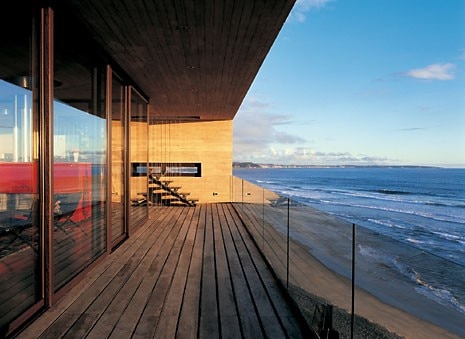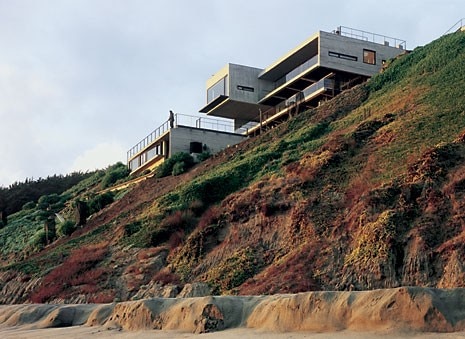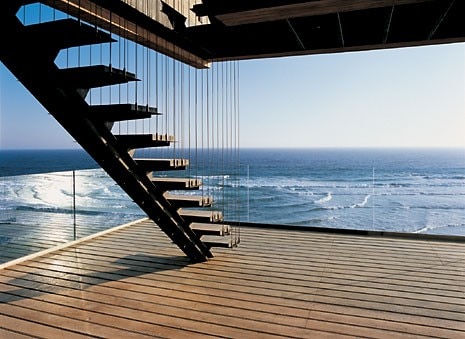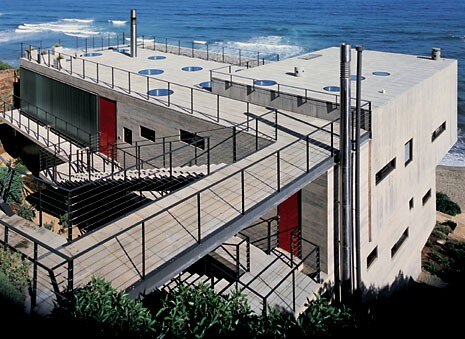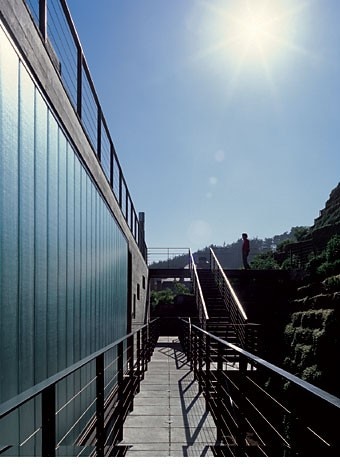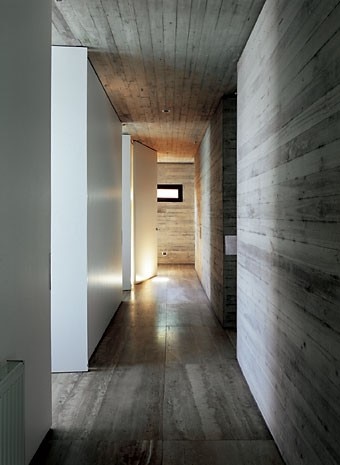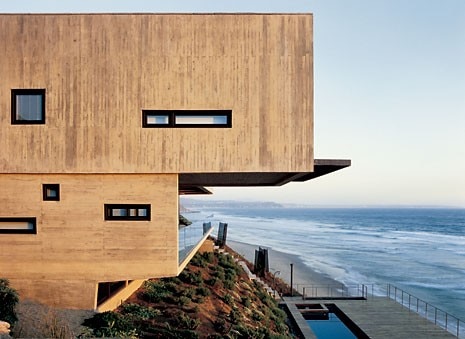The site has a magnificent view of the Pacific Ocean and drops quite steeply towards the beach. For this reason the design is developed on three levels and all the rooms, including the guest room, face the sea. At the same time, it seeks to resolve the numerous snags of a site which, despite its wide surface, is sharply restrained in its volume both by local regulations and topographical conditions. The resulting volume and built surface are the most that could be obtained.
Apart from these existing conditions, for me it has always been important to work on the section. In this particular case we also readjusted the site by making a nine-metre vertical cut into the slope. In this way natural light and air can also penetrate the interior through the rear elevation where the entrance is situated. This incision is clad by a large containing element: a high “green” wall built with a system of “reinforced earth”. In this way we have tried to minimise the physical and visual impact by exploiting the vegetation that grows on the different levels of the high wall.
The house is intended to be a monolithic block of bare concrete. The playroom and the television room are housed in the base; the bedrooms and living room for the “11 girls” on the first floor; the main living room, the kitchen and the master bedroom on the top floor. The forms used to cast the unfaced concrete were made with pinewood boards laid horizontally, except for the main bedroom where they were placed vertically to create a different texture on the walls to that of the other rooms. The roof is interpreted as a terrace and entry patio. Round skylights of varying sizes, built into the floor, let light into the kitchen and living room. Although the design and – almost random – position of the skylights seems to follow a quasi-decorative pattern, in actual fact it complies with a precise brief. For the two spaces are directly illuminated only at sunset.
The interior floors consist of travertine marble tiles, with which a continuous surface can be created, just like that of the ceilings where the concrete is left bare. To highlight the difference between loadbearing and non-load-bearing walls, the interior partitions are painted white. The doors, furthermore, have no frames but reach up to the ceiling, thereby heightening the effect of continuity sought both on the floor and on the ceilings. M.K.
